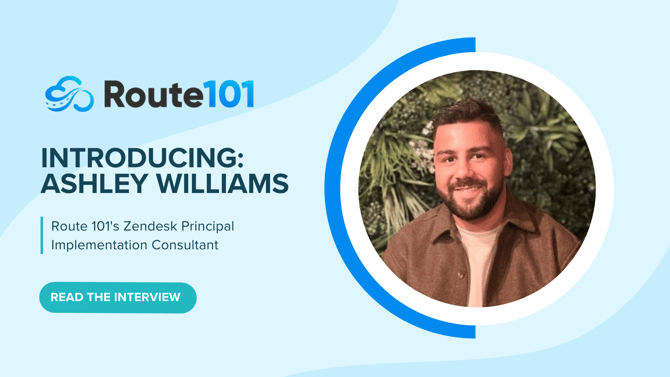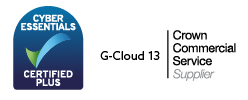We chat with Ashley Williams, Route 101's Zendesk Principal Implementation Consultant, on how embracing data-driven decisions with Zendesk Explore, along with regular health checks and training, can pave the way to achieving your CX goals.
Could you tell us about your role as Route 101's Principal Zendesk Implementation Consultant? What are your key areas of focus?
I started working at Route 101 two years ago now. Before that, I spent four years in a more operational position, working on the implementation, management, and expansion of the organisation’s Zendesk instance. I worked closely with the global service team to understand the challenges they faced and how the technology could be used to mitigate them.
Since becoming an Implementation Consultant at Route 101, I have been building on that gained knowledge to support customers in various industries and their diverse requirements. With each new challenge comes a new lesson learned.
Since beginning my journey here, I have become certified in both Zendesk Support as well as Zendesk Explore. I’d quite like to do Zendesk Guide next!
At Route 101, you specialise in Zendesk Explore. What is Zendesk Explore and what makes it so great?
Zendesk Explore is the reporting module within the Zendesk solution.
Understanding how agents and end-users are interacting with Zendesk is crucial for prioritising where to spend time and energy on the continued development of your instance. Making data-driven decisions is the absolute best way to extract the maximum value.
Having the ability to create reports to reference, or dashboards for more formal ongoing reporting, can help you answer a lot of the questions you might have.
Why would somebody find Zendesk Explore training useful? Could you share any valuable tips that you typically cover during training sessions?
I often talk to clients who rely on Key Performance Indicators (KPIs) to keep everyone in the loop about their service teams' performance. These KPIs need periodic reporting, and many clients spend a lot of time manually exporting raw data to manipulate in Excel because that is just what they are familiar with.
Having one or two data-minded individuals in your team who understand how your teams operate, and giving them the confidence to navigate the full capabilities of Explore, can automate the delivery of this process. This will free up resources to focus on more value-driven activities like interpreting this data and identifying where to focus attention.
For example, by utilising apps like Time Tracking in combination with Explore, you can answer questions like Which types of queries take the most / least effort for our agents? and How are these values changing over time? Multiply them by your ticket volumes and compare them to the amount of work your agents can do in a day, and you should be able to make some pretty good predictions for resourcing requirements.
What is the one piece of advice you would give someone who is just starting their journey with Zendesk?
I can only give one? But I have so many!
Have a plan for who is going to be responsible for what regarding maintenance and improvements. Do not have too many administrators. You will want to keep some control over who can make changes to the system and at least one person should have complete vision over everything that is going on.
Don’t add too much functionality that you don’t have a use for just because you can. Somewhere down the line, an administrator is going to spend a lot of time on a red herring mission trying to figure out why it exists.
Think carefully about what reporting you are going to need before you even get started and how you want them to look. Having this planned out will make it easier to ensure you are collecting the information in the right way from the get-go and give you as much data as possible to use when you need it.
How can existing Zendesk users stay in the know and maximise the potential of their platforms? What are your three top tips for them?
Tip 1: There is on-demand training available on Zendesk's website, which you can use to learn the foundations of different Zendesk modules, get stuck into some product deep-dives and maybe think about taking a certification exam. If you are interested in a more interactive training experience, Route 101 provides both remote and in-person training for each of the modules.
Tip 2: If you are looking to find out how your Zendesk instance could improve or solve a specific challenge, consider a health check. Route 101 offers health check services where a consultant like myself will review your platform and provide a report that will guide you in the right direction. We can then support you with any deliverables you may wish to pursue to accomplish your CX goals.
Tip 3: If there is something you wish your Zendesk instance could do but you are not sure how to make it happen, check out the Zendesk Help Centre. Chances are, you are not the first person with the same question!



